Part 21: Baguettes of the Marquesas
After 23 days at sea we had arrived in the Marquesas, and they’re everything we imagined. Steep volcanic ridges divide lush valleys that are home to sleepy idyllic villages. These islands once supported a population upwards of 80,000, but today are home to around 10,000.
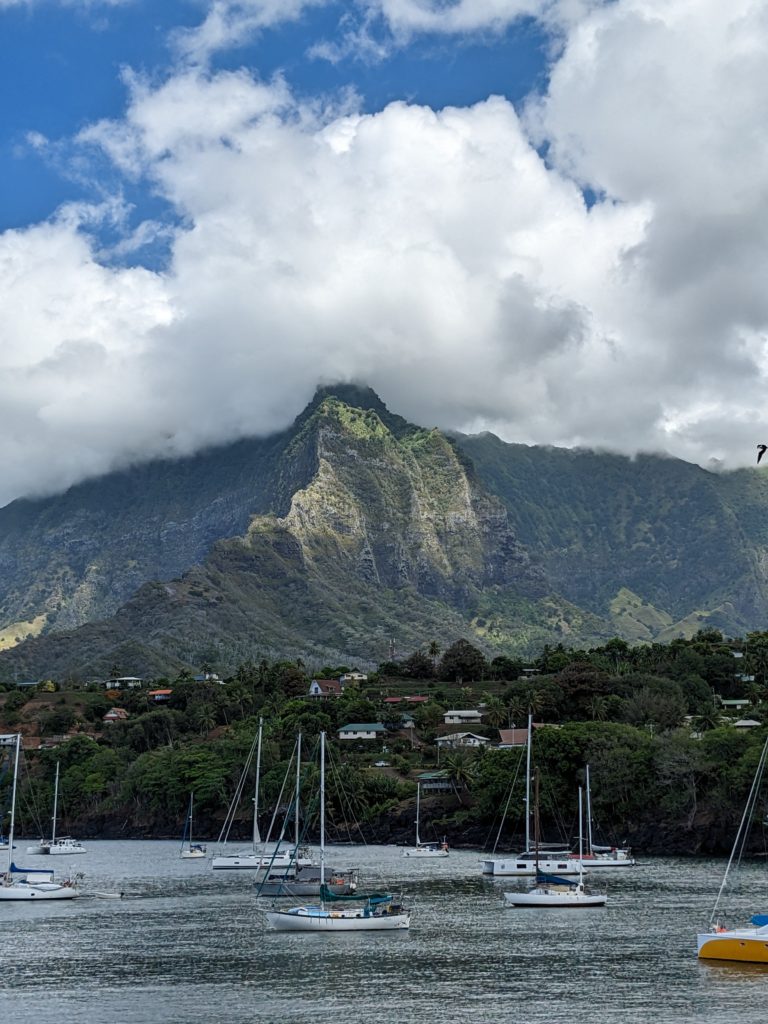
Herman Melville, author of Moby Dick, spent some time here in 1842, and wrote the novel Typee based on his experience. At that time the islanders still engaged in some light cannibalism. Between then and now there’s been a major culinary shift to eat bread, not Fred. Which brings us to the baguette.
In French Polynesia the baguette is a phenomenon. Most of the food in les magasins is quite expensive as it is imported by ship. A bag of chips costs ten Canadian dollars, but a bag…uette, is just eighty cents. Production is subsidized by the government to keep the cost low. The baguette is a basic human right, a dietary staple and a symbol of hope.
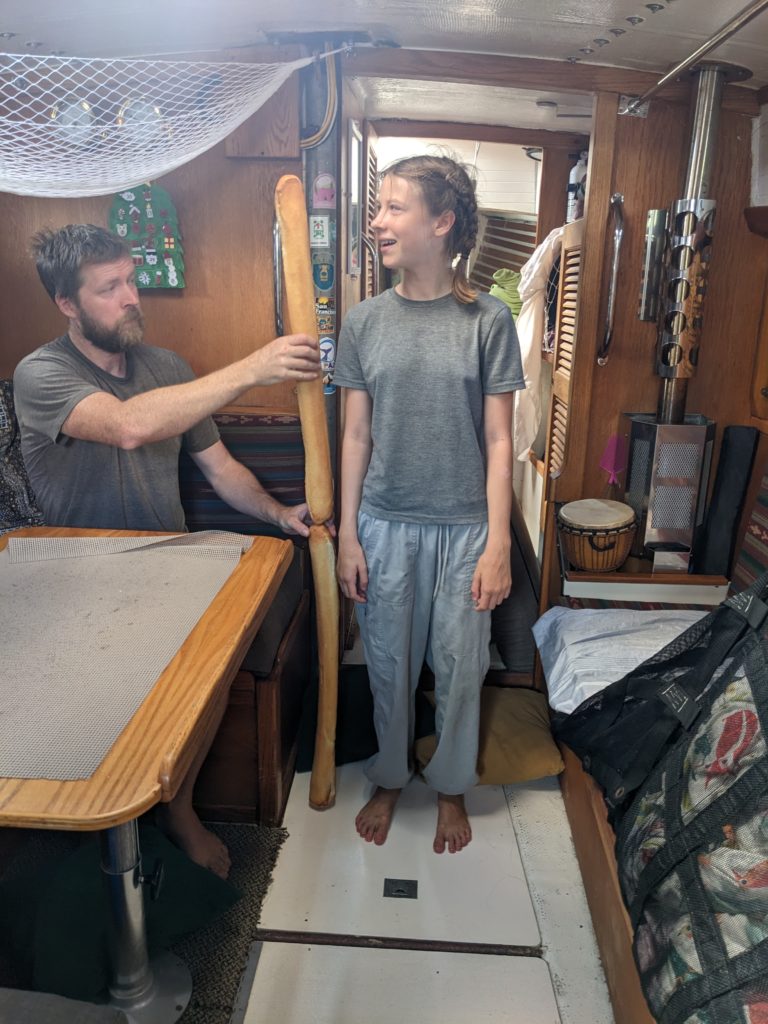
The first village we visited was Atuona on the island of Hiva Oa. Our first grocery store would be the gas station next to the harbor. In the corner was a large bin of baguettes. You’re probably imagining some desperation level gas station survival loaf. But no, these baguettes were perfection, with a crispy yet delicate crust embracing a cloud-like interior. It’s common to see people walking around with a sack of 6 or more. On Hiva Oa the baguette inventory would sell out each day around noon.
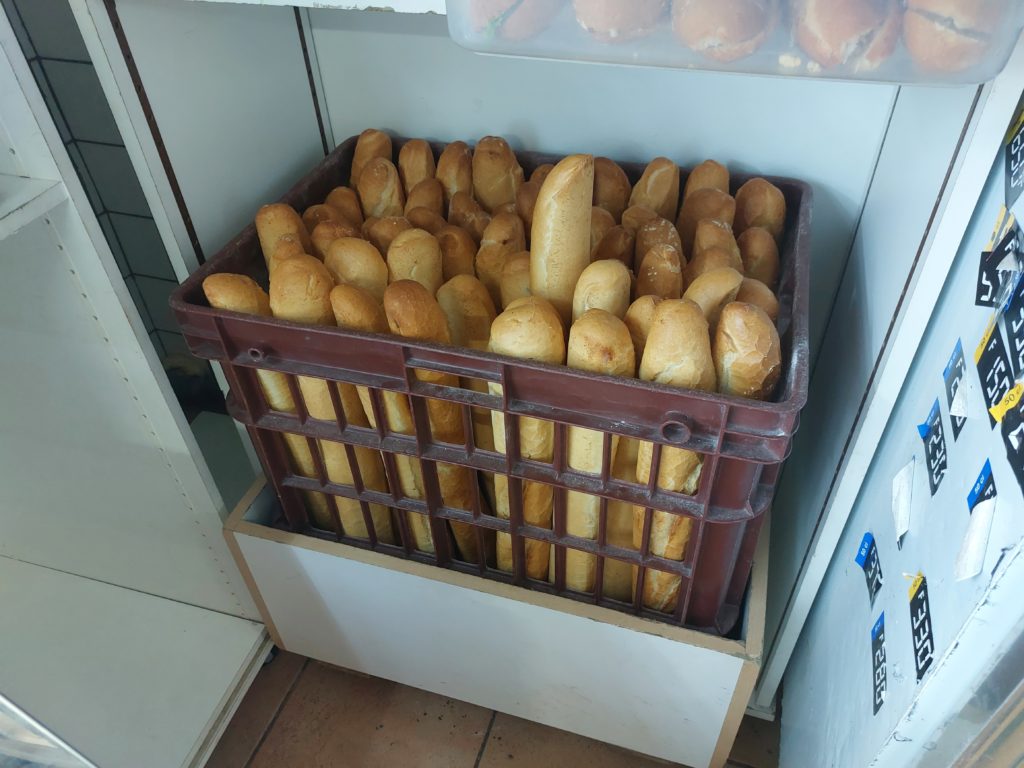
After exploring some small villages and anchorages in the southern Marquesas, we proceeded northwest to the big island of Nuku Hiva.
The village of Tapiohae on Nuku Hiva is where Melville describes arriving on a whaling ship back in 1842. He writes of being greeted by canoes full of warriors, followed by a flotilla of swimming island women who were not allowed in canoes due to Taboo. After dropping our anchor in the very same harbor, we waited expectantly, but no welcoming parties materialized. It’s possible our guidebook is out of date.
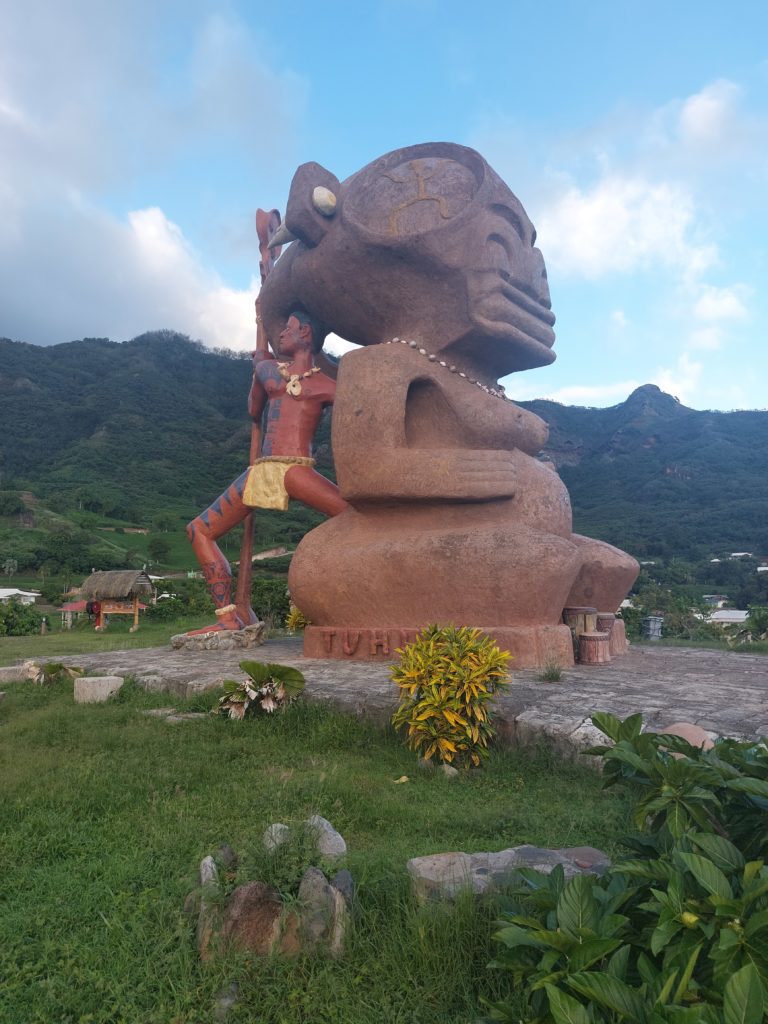
With a population of around 2000, Tapiohae is the New York City of the Marquesas, boasting four magasins to purchase supplies from. We first explored the town one afternoon, feeling a little jittery with baguette-withdrawal after spending a few days away from towns. Sarah inquired in the first magasin only to be kindly informed that the baguette sold out at 7AM. 7AM!? But what time does the store open!? 5:30AM. 5:30AM!?
To beat the heat, life in the Marquesas starts early. We then learned of the baguette reservation system, which allowed us to secure our supply for the next day.
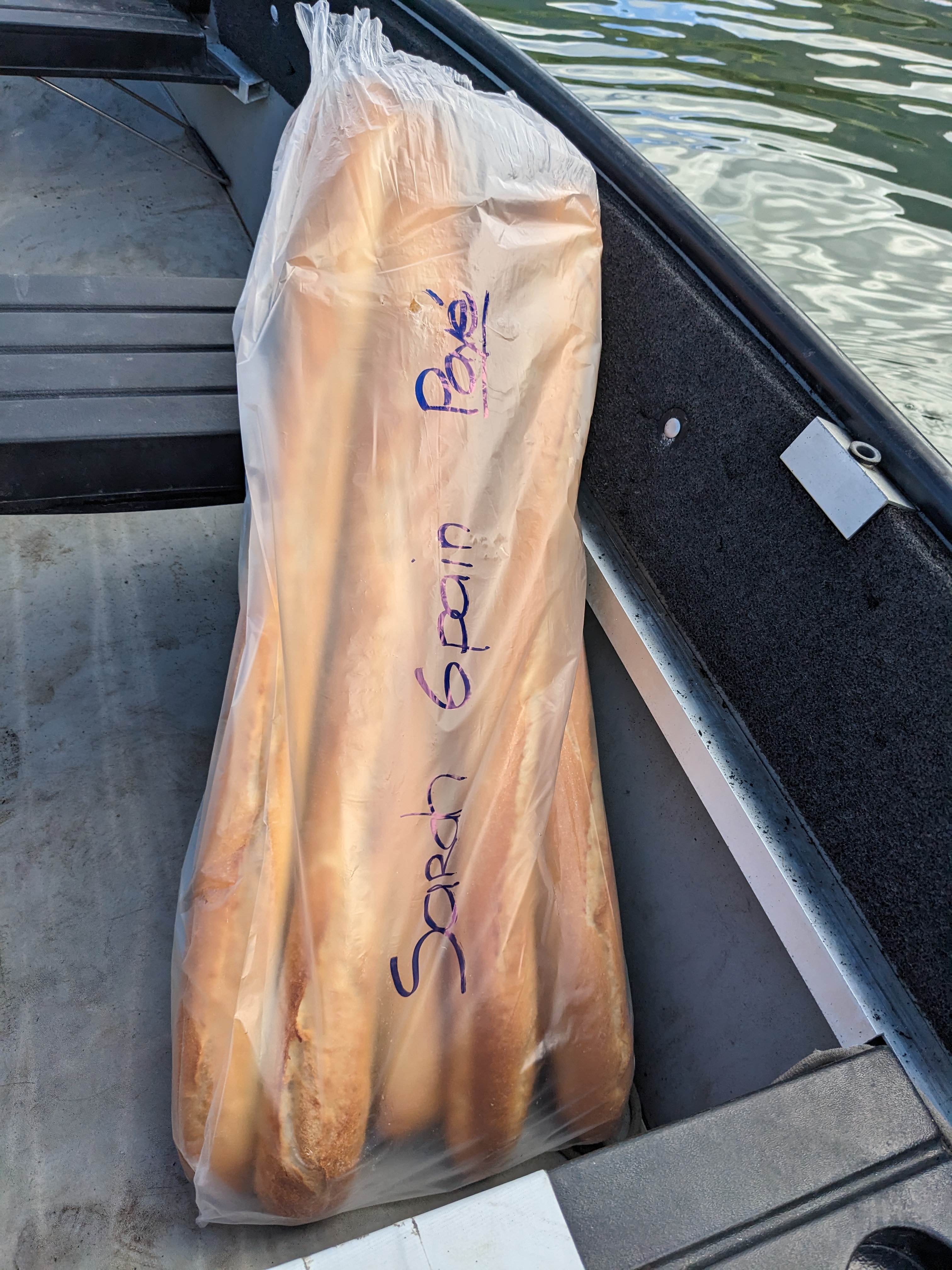
Throughout the Marquesas we found scenic valleys and lovely small communities. There are many remnants of ancient village sites, with large stone foundations being slowly overgrown. It’s fascinating to imagine what traditional life must have been like pre-baguette. Typee paints a picture from the 1800s, but even then a lot must have already changed.
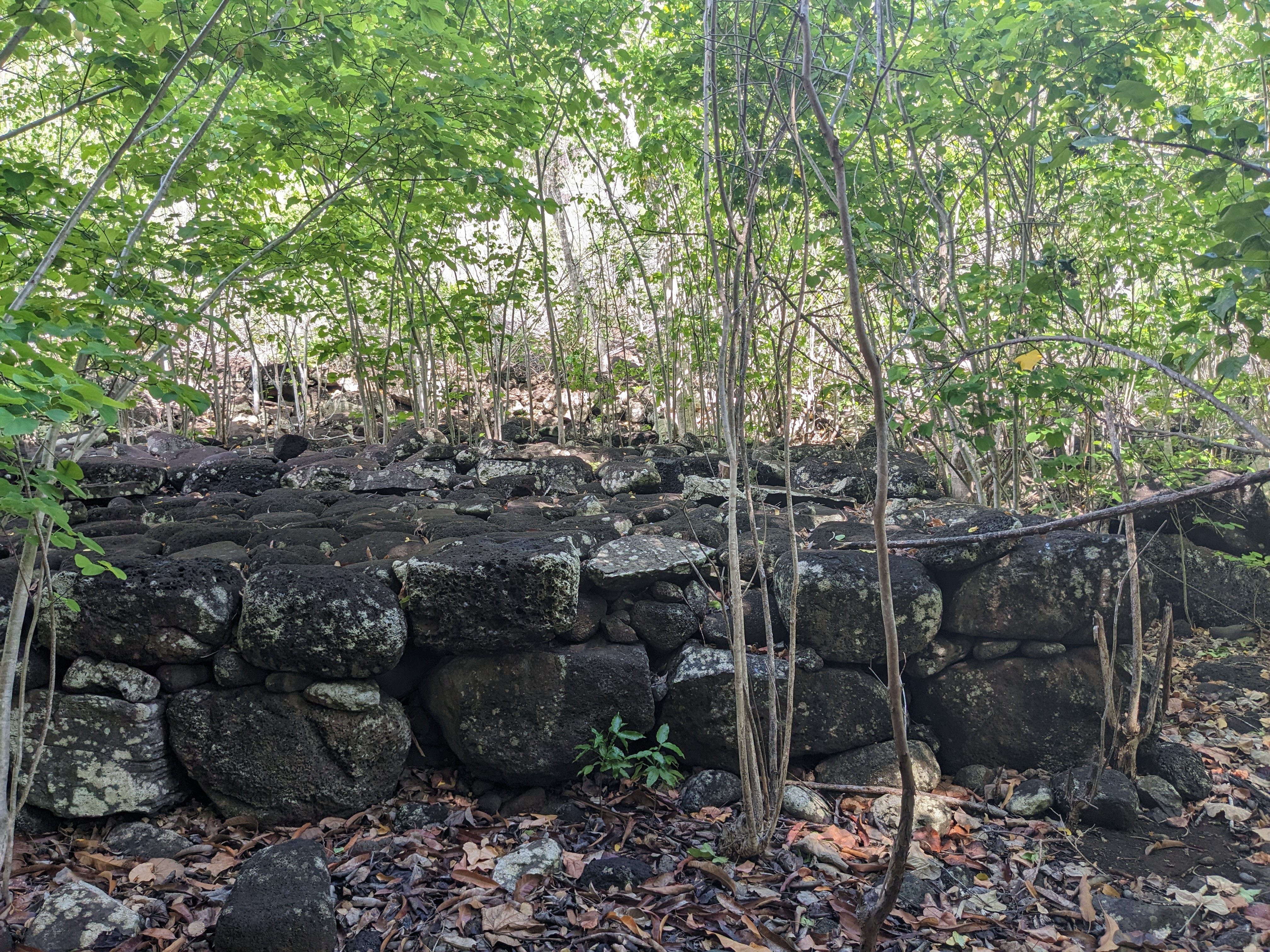
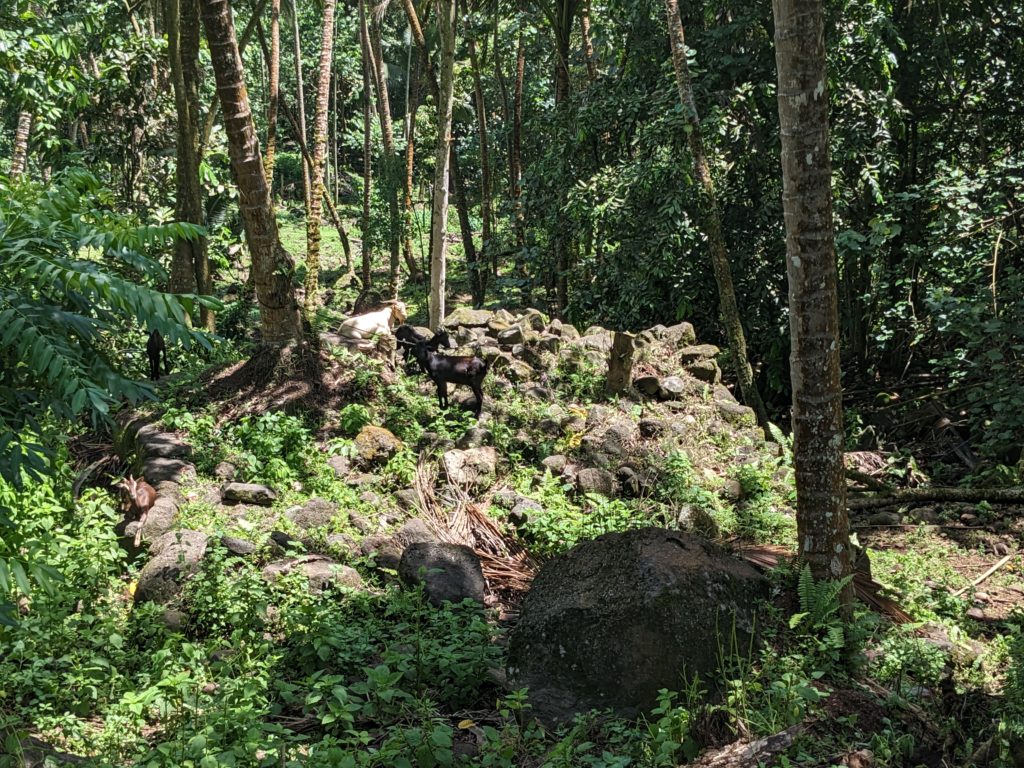
The islands support an abundance of fruit trees; bread fruit, pamplemousse, mango, banana, coconut, and many that we don’t recognize. Bread fruit and pamplemousse are our new favorites. They’re each the size of a cantaloupe, one savory and one sweet. Together you’ve got dinner and dessert for a whole family.
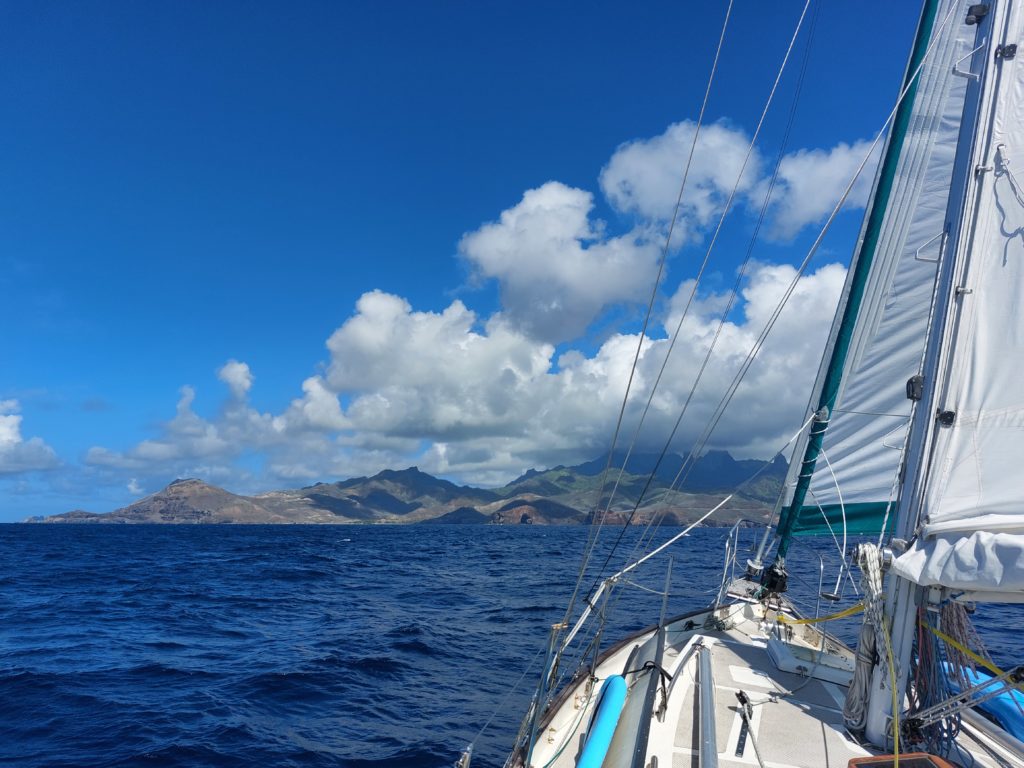
Our last stop in the Marquesas was the island of Ua Pou and the small village of Hakahetau. We did a short hike to an eccentric German chocolatier who had carved out a minor paradise for himself in the hills above the village. “I have touched thousands of women…”, he informed us in his introduction, as our eyes darted nervously towards the exit, “as I was previously a masseuse in Germany.” Well sir, I hope you washed your hands between careers, these chocolates are delicious.
After that we stopped by an amazing waterfall, then it was back to the village magasin to see about lunch supplies. We were surprised to see a supply of baguette on the shelf. It was noon and they weren’t sold out, it was our lucky day. We got a little cheese for a picnic and found a place to sit down, only to realize that the baguette… were limp! The sun passed behind a cloud and the village took on a sinister aspect. Day old baguette? Are these people not eating their daily allotment? What are they eating? Where’s Fred!?
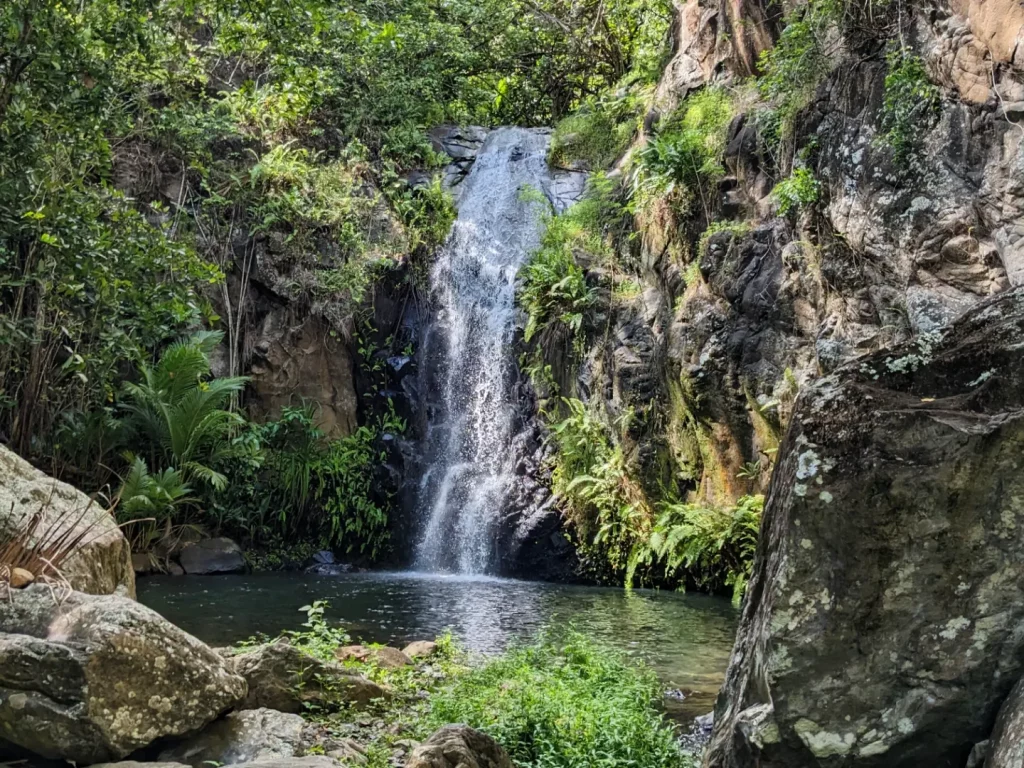

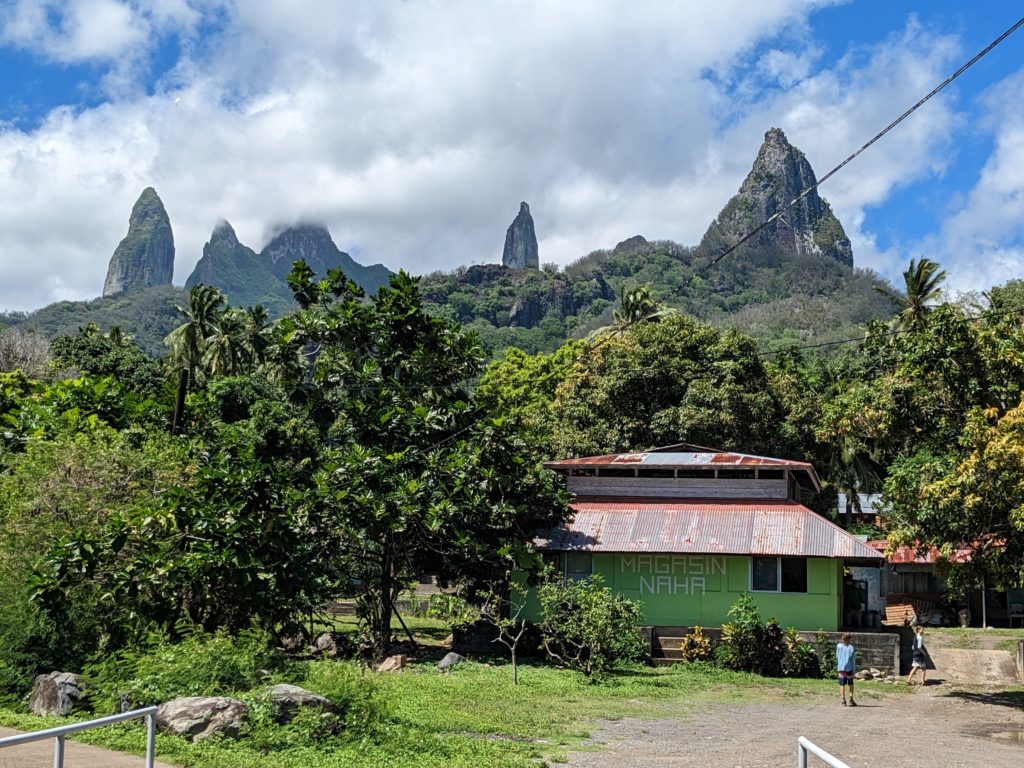
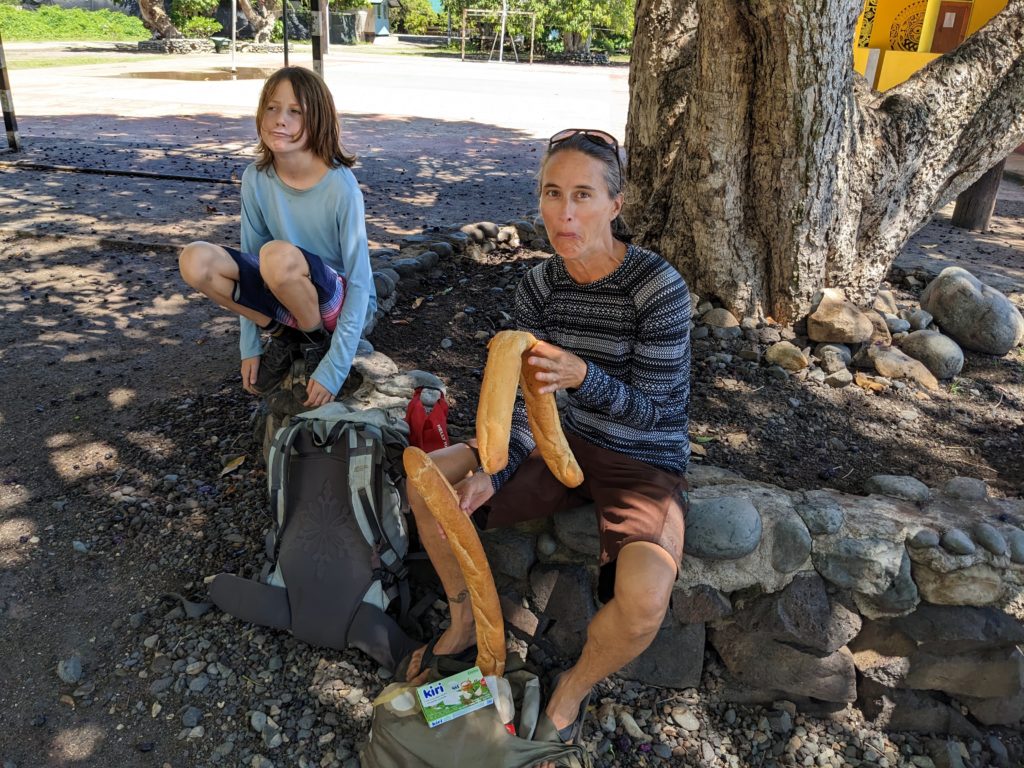
It’s possible the baguette are delivered frozen to the smaller islands. It’s also possible these baguette were never intended for human consumption. Maybe these were livestock grade, who knows. They were still pretty good.
Lastly, there are a lot of goats here. This doesn’t fit into the baguette theme, but I thought you should know. Wild goats up in the hills, making goaty noises.
Onward to the Tuamotus!
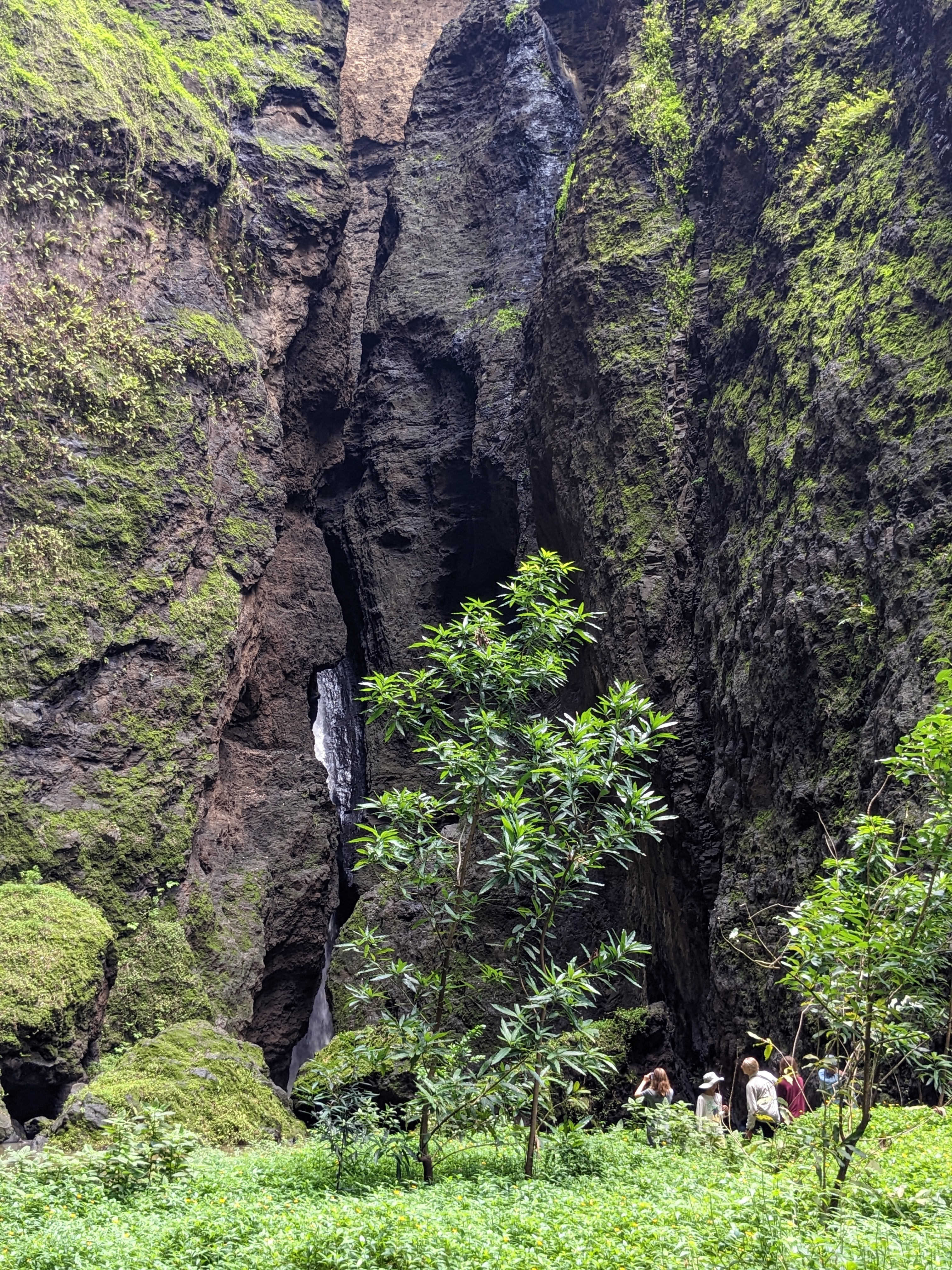
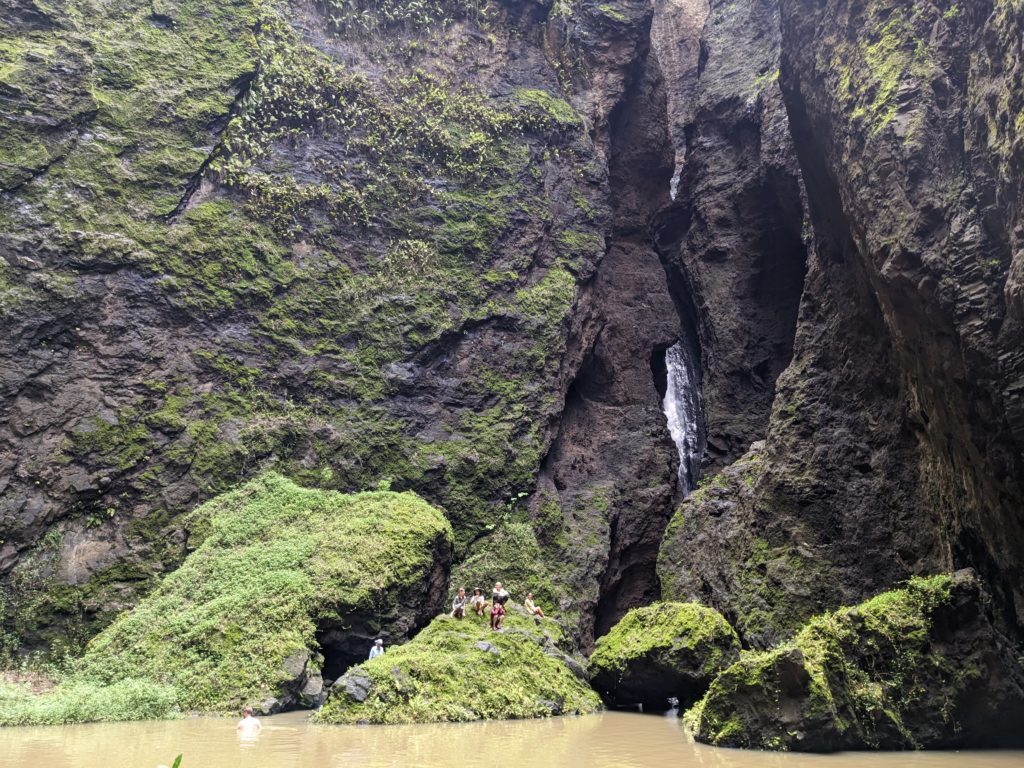


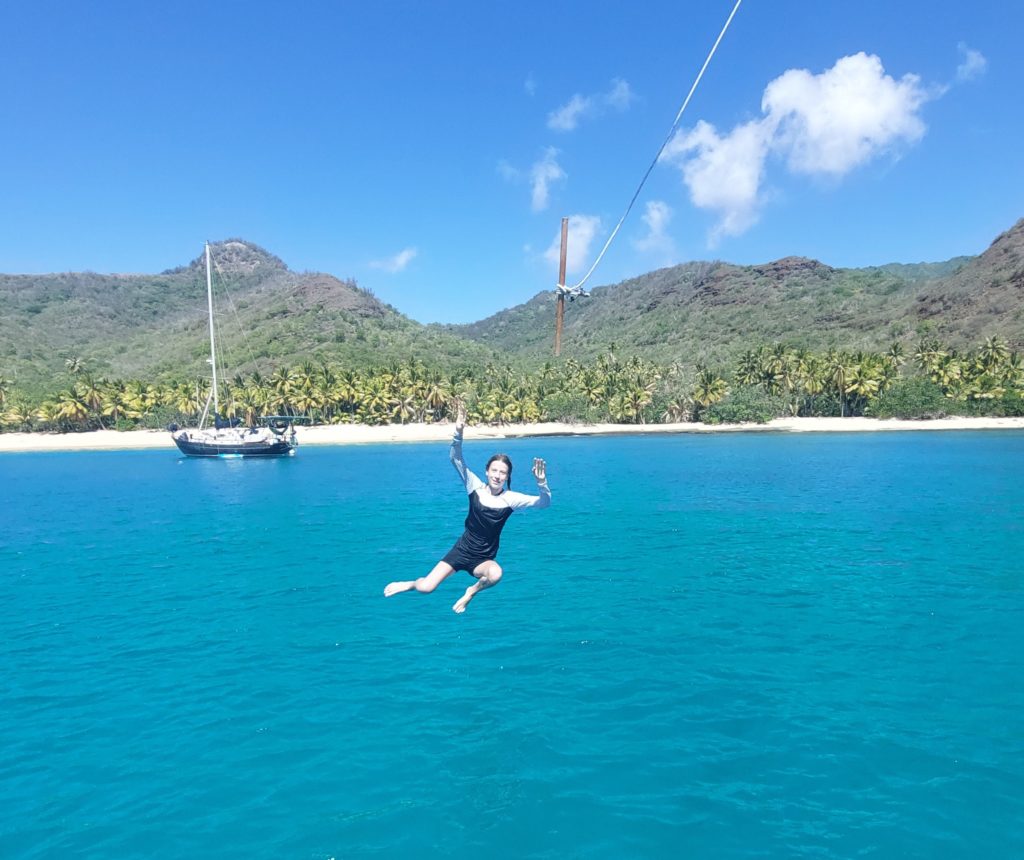
6 thoughts on “Part 21: Baguettes of the Marquesas”
❤️ this. WOW.
“Some light cannibalism” Ha! Well done, you four!
Wow! What a marvellous experience! So beautiful!
PS I am a friend of your mom.
Another fun to read post. Of course these will all be included in a book right? I sure hope so!! Doesn’t sound like many tourists? And you don’t ever mention spirits ie: wine/rum/beer? What goes with Baquettes – cheese and wine!! Keep enjoying every day – incredible memories for a lifetime.
I was telling a friend of mine about your trip and she commented on how educational it was for the kids. I thought for a minute and replied “for me too” reading your blogs I am learning so much about our world. Thank you Doug. Your writing and photos are so very interesting. I refer frequently to my atlas which prior to this has collected at least a decade of dust.
Loved every word Doug!! I have a new found respect for Baguette that I didn’t know I needed… so much depth in such a simple artifact of human consumption! Makes me wonder if the goats quietly wander about at night, eating remnants of the crusty exterior that fall to the ground from unknowing visitors 🙂
Love reading of these adventures…keep them coming! I will say though.. I’m now worried about Fred and will likely loose sleep over his unknown whereabouts.
Cheers awesome humans and fair winds!
Richard
Comments are closed.